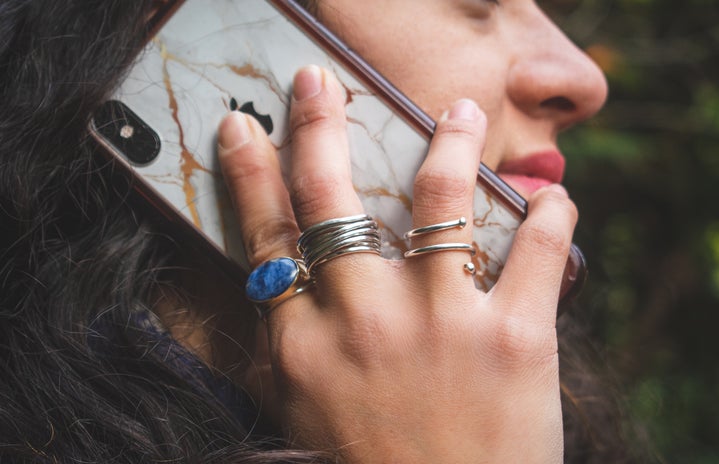Welcome back to part 4 (wow) of my series. I like to think of it as an episodic documentary of my journey to get a definitive answer to what’s wrong with my uterus? If you haven’t yet read the other episodes and would like to, visit my author page to check them out.
It’s sad that I was so excited to be reunited with Kaiser insurance, yet that’s where I was at in December. Our new plan was set to kick off the new year on January 1st, so what did I do on January 1st? Call Kaiser and set up an appointment with an OBGYN.
While I anxiously awaited my video appointment for a whole 6 days, I prepared. My two years of feeling not quite heard and not quite helped had me actually anxious. I was worried that I would yet again leave an appointment or hang up a call feeling disappointed. Those interactions, while in the grand scheme of things weren’t that bad, blanketed me under a cloud of ennui.
This frantic anticipation of disappointment caused me to focus a lot of time on organizing myself. I sat myself down and thought: what are my goals for this appointment? It came down to 1. Finding out what’s wrong and 2. Working towards the least painful possible lifestyle for me.
See, turns out I have a family history of uterine fibroids. While my list of symptoms have always leaned the most towards the realm of endometriosis, there is a chance that there is a completely different culprit to be put on trial, not to mention the prospect of more than one diagnosis. I had to open my mind to the idea of a diagnosis other than the endometriosis that I have been expecting, thus my first goal is to find out what’s going on.
Now for the second goal, I knew it was unrealistic to even imagine a world where I didn’t suffer at all. It’s just not likely and I shouldn’t waste time or energy on it. Efforts to put a positive spin on this quite depressing reality caused me to land on working, with my OBGYN, to find options that reduced pain for me.
After solidifying my goals, what was next? I pulled a full Capricorn and collated all of the notes I had been taking. Yes, I had been taking notes during and after every appointment with Planned Parenthood because of how, in retrospect, the appointment I had with Kaiser to get my Nexplanon implant had red flags from the beginning. This was my way of being more present and critical from the start.
Putting my notes together revealed a timeline, the same one that I have more illustratively painted in these articles. It also uncovered the beginning of a masterlist of symptoms. When you’re not in the thick of it, however, it’s hard to remember every little change that occurs during menstruation.
And so, I pulled a second full on Capricorn. In researching endometriosis symptoms online, I was better able to put together a more complete list of symptoms that I experienced before, during, and in the days after my period. Never fear, I did, in fact, include smaller details such as whether symptoms were sometimes, always, or varied in magnitude.
I joined the video call with my collated notes, all listed neatly on one page in my bullet journal. I had allowed myself to become excited for this appointment; the doctor’s bio detailed that she sees medicine as a collaborative process between patients and doctors. This was the reason why I chose her, for I hoped that this mindset would lead to the professional balance of listening and leading that I have been needing.
Of course, the video call doesn’t work. My doctor tries to join a couple times and both the microphones and cameras on either end decide they’re on break. So, we resorted to phone call. I started off with my goals which seemed to impress, and it turns out my doubled Capricorn efforts were just what I needed to make this call efficient.
She definitely helped; by asking clarifying questions and reading back all the notes she had taken, I felt like she was making a concerted effort to understand my experience before deciding on anything else. She asked follow up questions that no one else had asked; in fact, she asked follow up questions when no one else did.
One of these questions was whether I like my combination hormone pills so far. She put down the brand and dosage in her notes and listened as I said yes, I think so. I had already told her that my last call to Planned Parenthood had ended with instructions to either do a nine week cycle or just take the pills until I bleed again. My new doctor then asserted that a period every nine weeks was too frequent for my level of pain and I should do a cycle of 12 weeks. In simpler terms, a new doctor was standing up for me only 20 minutes after meeting me.
I was already feeling truly listened to for the first time and then I was impressed a second time over. My #girlboss of an OBGYN then said here’s what we’re going to do and set me up to have a new exam, bloodwork, and an ultrasound. When the call ended, I immediately called my mom to tell her the good news.
I didn’t leave this phone call smelling any whiff of disappointment and looking back on it a month later doesn’t raise any red flags. This was the kind of patient-doctor relationship that I had been subconsciously seeking. By making an effort to truly understand not just what’s wrong, but what I want to do about it, my new OB was able to come up with a plan for the long term when everything else had been so short term.
The doctor and clinicians that I had seen previously were way better than my expectations going in, so was it really fair of me to be disappointed? They listened to my symptoms and tried to treat them in their own ways.
But, the answer is yes, it’s fair of me to be disappointed. Just because doing the bare minimum is synonymous with going above and beyond in the world of women’s medicine doesn’t mean I, or you, have to accept the bare minimum.
This process could be murkier and a lot more terrifying than it has turned out to be. I know that many uterus owners out there have been through more than I have, but it’s time for me to stop using that to discount my own experience.
I find myself in front of the idea that maybe I’m weak for not being able to just take the pain. Somewhere near the line of conscious and subconscious, there is an argument occurring in my head. One side, the more immature of the two, still believes that a real feminist is indestructible and I shouldn’t show so much vulnerability so widely. This is the side that may be a little afraid to, upon the moment of diagnosis, transition over the threshold into the realm of disability.
Rationally, I know that there is nothing wrong with any of the infinite forms of being disabled. If anything, I’ve come to learn that through accommodations, my life could actually become a lot easier. Being able to work from home or have additional PTO for the weeks that I need them could save me from suffering in uncomfortable environments to the point of holding back tears and cracking jokes to make it through the day.
Unfortunately, when you really look at it, having to take a heating pad to work and class on top of four times the recommended dose of ibuprofen is not cute or quirky. It can make it easier to think about it that way, but the reality of it is, for lack of a more nuanced word, sad.
This is what makes the new year so special for me; when I said “new year, new me,” I meant it. By December 2022 I will know exactly what is plaguing me, replacing the fog of mystery that surrounds my uterus with an air of surety, and have learned many things that will make my 4 periods a year less debilitating.


